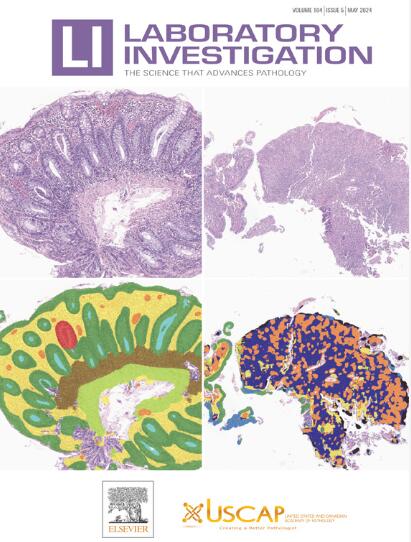宫颈癌前病变中HPV整合位点的异质性分布影响了整合子特异性PCR的诊断准确性。
IF 4.2
2区 医学
Q1 MEDICINE, RESEARCH & EXPERIMENTAL
引用次数: 0
摘要
HPV-DNA整合到宿主基因组中是宫颈癌发生过程中经常发生的事件,并可能驱动受影响细胞的克隆扩增。基于病毒细胞连接(vcj)序列,可以设计高度特异性的vcj- pcr来检测宫颈细胞刮痕或组织样本DNA中的病毒整合物。在最近的一项研究中,这种患者特异性vcj-PCR检测在术后监测中用于检测复发的高级别鳞状上皮内病变(HSIL)。虽然vcj-PCR的特异性为100%,但该方法仅检测到50%的复发。本研究的重点是分析这种有限敏感性的原因。通过化学显微解剖和随后的vcj-PCR分析,我们可以证明大多数病变具有异质整合模式。16个视锥细胞中只有2个在整个病变中表现出均匀分布。其他病变在背景HPV16/18 DNA阳性的HSIL组织中显示含有整合物的克隆性外生物。在四个病例中,病变中检测不到相应的整合物。这些结果表明,由于局灶内异质性,vcj-PCR检测复发性疾病的敏感性有限。因此,观察到的异质性整合模式可能反映了大多数大型HSIL的多灶性。另外,也需要考虑HPV整合可能是致癌过程中的晚期事件的可能性。本文章由计算机程序翻译,如有差异,请以英文原文为准。
Heterogeneous Distribution of Human Papillomavirus (HPV) Integration Sites in Cervical Precancers Compromises the Diagnostic Accuracy of Integrant-Specific PCR
Human papillomavirus (HPV) DNA integration into the host genome is a frequent event in cervical carcinogenesis and may drive clonal expansion of the affected cells. Based on viral cellular junction (vcj) sequences, highly specific vcj-PCRs can be designed to detect viral integrants in DNA from cervical cell scrapes or tissue samples. In a recent study, such patient-specific vcj-PCR assays were employed for the detection of recurrent high-grade squamous intraepithelial lesions (HSIL) during postoperative surveillance. Although the specificity of vcj-PCR was 100%, only 50% of the recurrences were detected using this approach. The focus of the current study was to analyze the cause of this limited sensitivity. Using chemical microdissection and subsequent vcj-PCR analysis, we could demonstrate that the majority of lesions have a heterogeneous integrant pattern. Only 2 of 16 cones showed a homogeneous distribution of the respective integrants throughout the entire lesion. The other lesions displayed clonal outgrowths harboring the integrant in a background HPV16/18 DNA-positive HSIL tissue. In 4 cases, the respective integrant was undetectable in the lesion. These findings indicate that vcj-PCR has limited sensitivity for the detection of recurrent disease owing to intralesional heterogeneity. The observed heterogeneous integrant pattern may thus reflect the multifocal nature of most large HSIL. Alternatively, the possibility that HPV integration may be a late event in the carcinogenic process also needs to be considered.
求助全文
通过发布文献求助,成功后即可免费获取论文全文。
去求助
来源期刊

Laboratory Investigation
医学-病理学
CiteScore
8.30
自引率
0.00%
发文量
125
审稿时长
2 months
期刊介绍:
Laboratory Investigation is an international journal owned by the United States and Canadian Academy of Pathology. Laboratory Investigation offers prompt publication of high-quality original research in all biomedical disciplines relating to the understanding of human disease and the application of new methods to the diagnosis of disease. Both human and experimental studies are welcome.
 求助内容:
求助内容: 应助结果提醒方式:
应助结果提醒方式:


